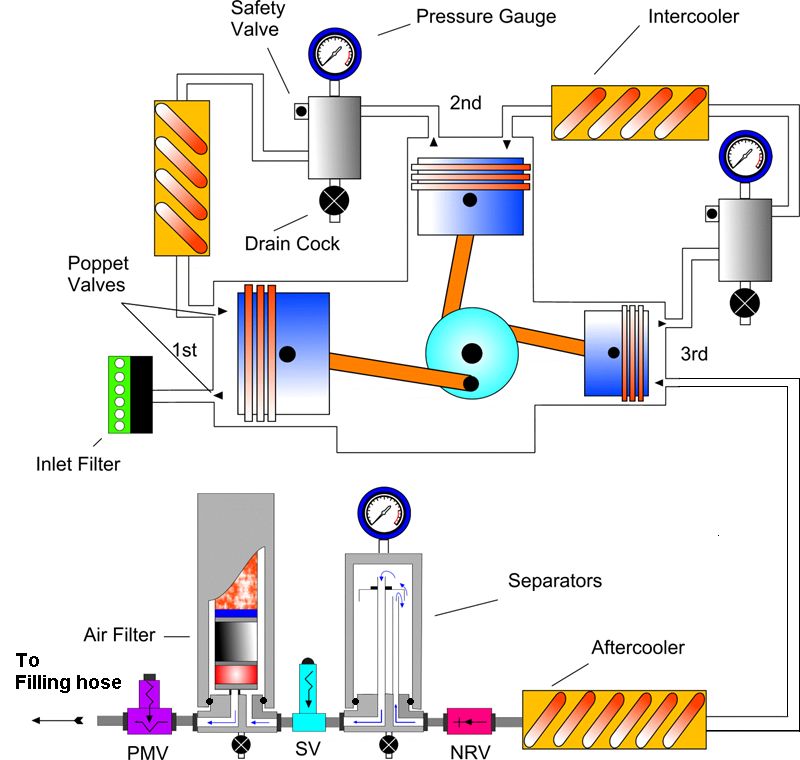Rather than hijacking it, I decided to start a new thread, inspired by the quote below from this thread on AGN.
I have suspected exactly this as I have been learning about compressors. No matter what we do, there is going to be water vapor in our tanks, bottles and guns. It seems like the best you can hope for with a compressor is to reduce it to the point where you have the lowest amount of water condensing into liquid in your tank, bottle and gun. Nitrogen seems like the perfect gas for use in PCP guns, but it is quite expensive here, so not an option for me, so I will continue on with my compressors. A bonus on having a dewar (They don't call them tanks apparently) full of Nitrogen, you could also fill your tires with it and freeze stuff!
Perhaps if some gun maker came up with a rust (corrosion) proof or at least highly rust resistant PCP gun made of stainless steel alloys that would not corrode inside if moisture was present, they might have a winner.
Some questions for you elwoodblues or others.
If you really want DRY air you can get reconstituted breathing air but if you going to breath it for long it will dry all your airways out it is made of 79.1 %Nitrogen and 20.9 % oxygen these 2 components make great air EXTREMLY DRY. Nobody wants to breath it for long Too Dry. I've been in the compressed gas biz for the last 45 years and ALL the air separation plants for AirLiquide, Airco, Praxair, AirProducts have tried to MAKE air from those gases, they all had to go back to Compressors with filters and some driers for breathing air, So breathing air is NOT really dry the filters are for all the enviromental elements that come from compressing air
I have suspected exactly this as I have been learning about compressors. No matter what we do, there is going to be water vapor in our tanks, bottles and guns. It seems like the best you can hope for with a compressor is to reduce it to the point where you have the lowest amount of water condensing into liquid in your tank, bottle and gun. Nitrogen seems like the perfect gas for use in PCP guns, but it is quite expensive here, so not an option for me, so I will continue on with my compressors. A bonus on having a dewar (They don't call them tanks apparently) full of Nitrogen, you could also fill your tires with it and freeze stuff!
Perhaps if some gun maker came up with a rust (corrosion) proof or at least highly rust resistant PCP gun made of stainless steel alloys that would not corrode inside if moisture was present, they might have a winner.
Some questions for you elwoodblues or others.
- Assuming we aren't injecting liquid water into the gun, what causes the water vapor that is in all the air we are putting into our guns, to condense out into liquid inside the gun?
- What is the easiest and lowest cost method to verify the moisture content of the air we are putting in our guns?
- What is the maximum moisture content percentage that would be considered "safe" as far as not causing corrosion?
- Is a coalescing water trap the most effective method of reducing moisture?
- How long would air need to be in contact with Synthetic Zeolite or some other product, to significantly reduce the moisture content? My guess is many times longer than simply passing through a small tube filled with it as it moves into or out of the compressor.
- Is Synthetic Zeolite the best option for a final filter and does it or some other material actually do any good or is it a waste of time and money?
- What are your thoughts on the cartridges at the last stage in line, filled with Silica Gel, Synthetic Zeolite and Charcoal? Seems like a gimmick to me.
Last edited:

